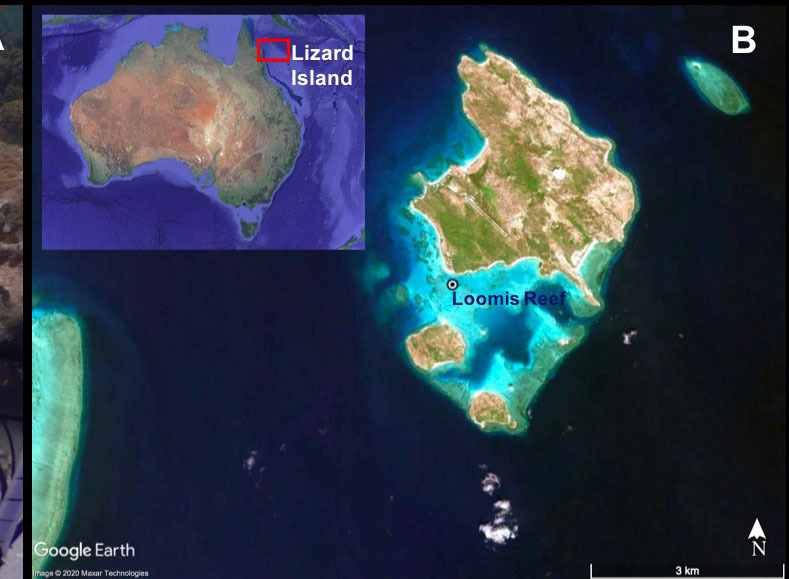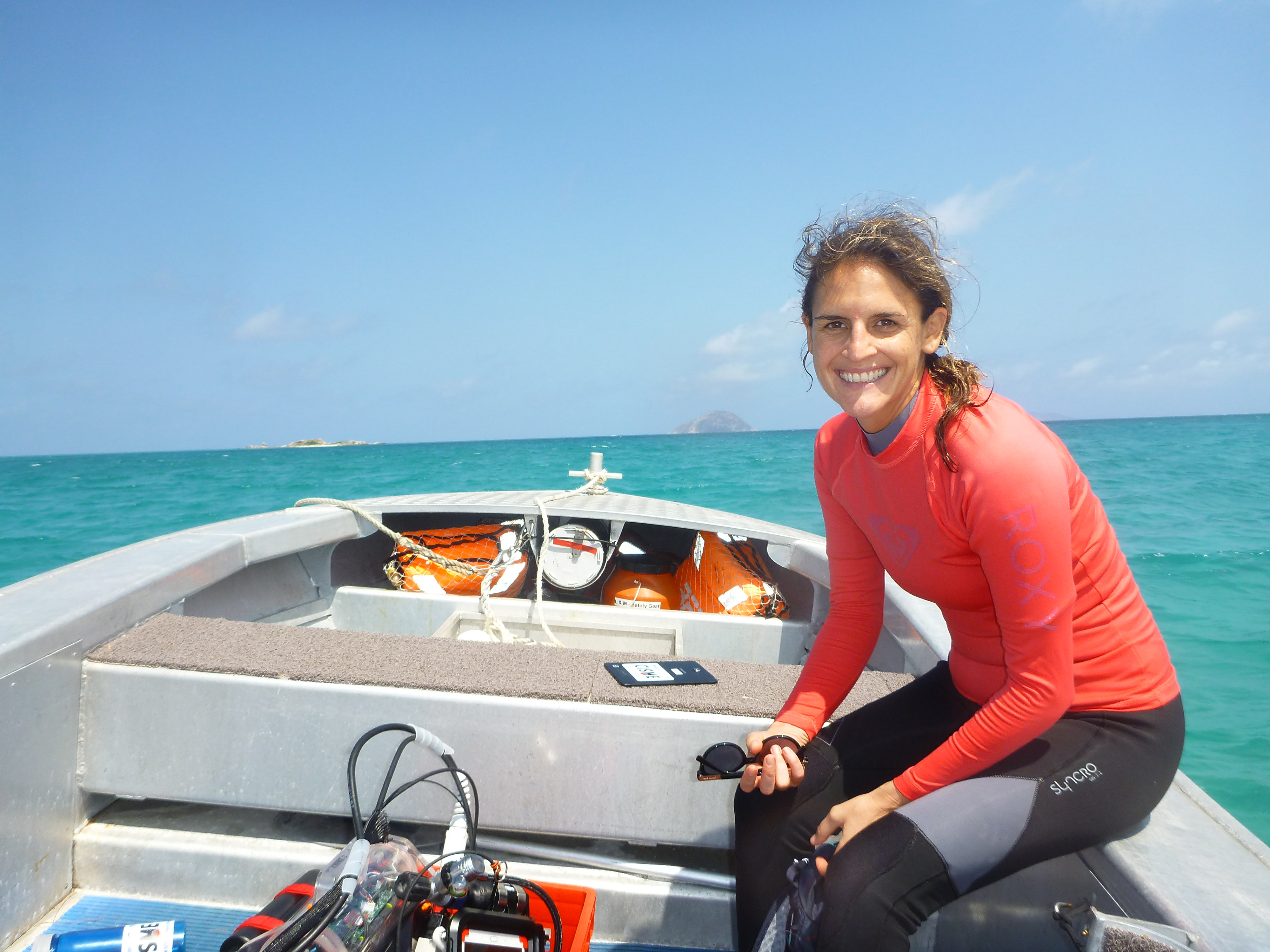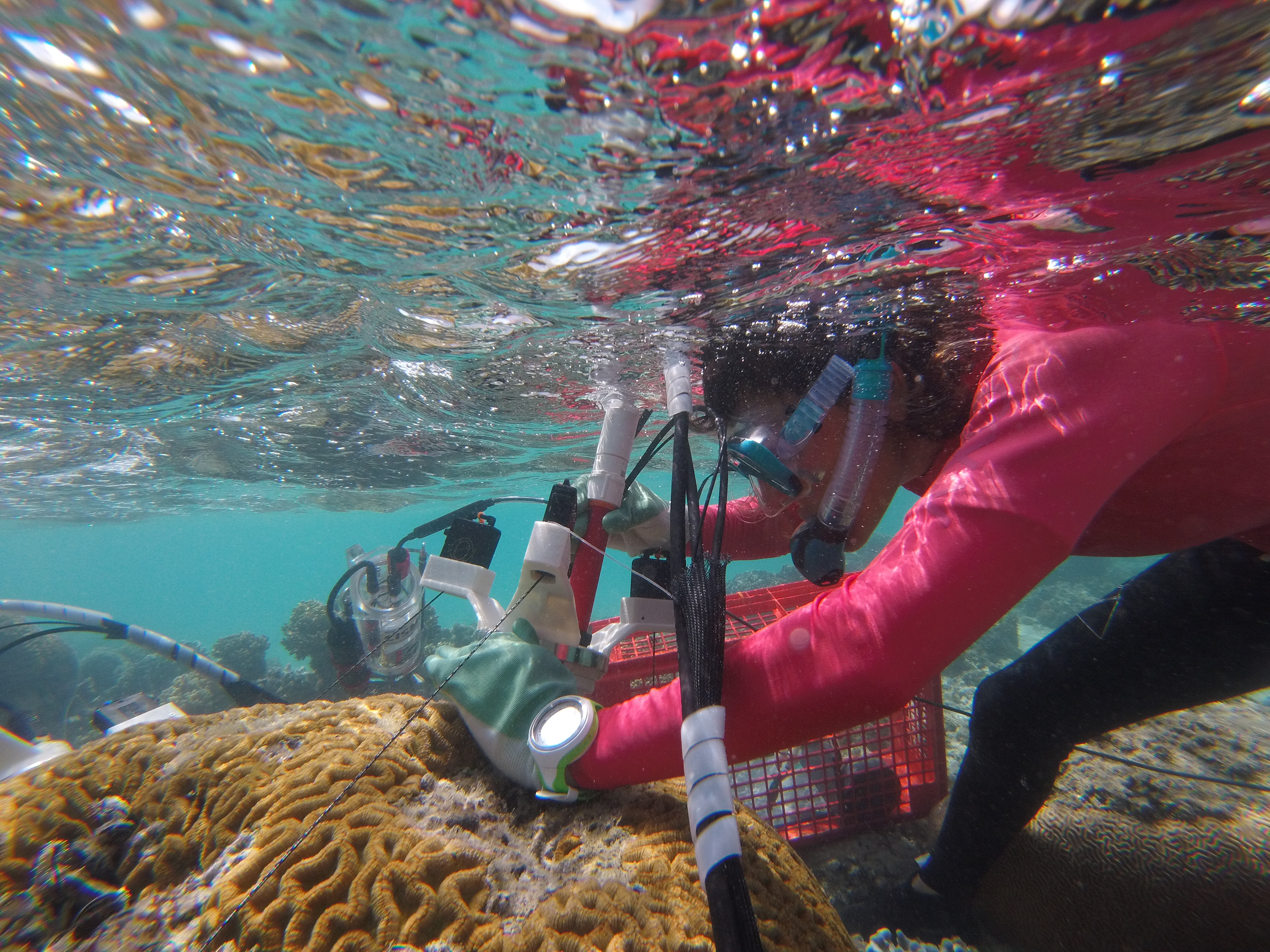Surprise: Turf Algae Contribute to Coral Reef Calcification
Carnegie In The News
"For Michalak, the best thing that can be done to prevent freshwater algal blooms is to limit climate change by cutting carbon emissions. But she agrees that lake management must become a higher priority. ‘We will need to be much more aggressive in how we manage lakes in order to achieve the same outcome as we would have had climate change not been occurring,’ she said."

Coral reefs are declining worldwide from overfishing, sedimentation, ocean acidification, and climate change. As reefs degrade, the ecology changes. Dominant reef-building organisms, such as corals, give way to macroalgae and so-called turf algae that rapidly colonize on dead coral. This change can significantly impact the carbonate chemistry that supports the biology that builds the reefs.
It has been assumed that daytime measurements of high reef calcification were an indicator of reef health. Now a study, led by Carnegie postdoctoral fellow Manoela Romanó de Orte working with Carnegie senior staff scientist emeritus Ken Caldeira, shows high calcification rates in daylight by turf algae communities, but with mineral dissolution at night. Corals add carbonate minerals to reefs daily. Turf algae, however, appear to cycle through precipitating and dissolving carbonate minerals each day. This unexpected result upends the current paradigm and suggests that daily measurements of reef carbonate may not indicate coral reef growth but rather a daily cycle of carbonate gain and loss by algae.
Understanding how algal turf influences coral reef carbonate budgets is necessary to predict whether these ecosystems will continue to accrete or decline with global warming and ocean acidification. Net calcium carbonate accretion is the difference between biological mineral production and mineral loss through chemical dissolution and erosion from ocean dynamics. However, the relationships between shifts in community composition and net calcium carbonate accretion have been unclear.
The Romanó de Orte team used a novel, state-of-the-art incubation instrument called Coral In-Situ Metabolism and Energetics (CISME) to measure net calcification and photosynthesis rates of live corals and algal turf in the Lizard Island area of the Great Barrier Reef. In recent years, the area has been affected by two tropical cyclones and two severe bleaching events, which decreased live coral. It was the first application of CISME to study coral reef metabolism.
The fact that calcification rates under light were similar for coral and algal turf communities but at night corals continued calcifying, while the algal turf dissolved the calcification, means that measuring only during the day gives a biased view.
The results suggest that, under changing conditions, coral reefs may shift from slow, long-term accretion of calcium carbonate to become daily cyclers of the mineral with little or no long-term accretion. If this transition occurs, coral reefs may fail to produce enough carbonate to offset physical erosion.

This aerial photograph shows the study area around Lizard Island. The inset show the island’s location on the northern Great Barrier Reef.


Postdoctoral fellow Manoela Romanó de Orte (both images) in Ken Caldeira’s lab led the study showing high calcification rates in daylight turf algae communities of the Lizard Island area of the Great Barrier Reef. Her team used a state-of-the-art incubation instrument called Coral In-Situ Metabolism and Energetics (CISME) to measure net calcification and photosynthesis rates of live corals and algal turf (right). It was the first time CISME has been used to study coral reef metabolism.
Images courtesy Ken Caldeira, Carnegie Institution for Science
Video courtesy of Manoela Romanó de Orte
